For nearly two decades, Hot 97 has been New York City’s go-to station for Hip Hop and R&B. Taking the reins from WBLS and KISS FM, Hot offered a fresh perspective on the growing youth culture. The station was the perfect vehicle for Hip Hop–proving how vital radio could be for up and coming artists. Nowadays? Not so much. Radio isn’t nearly as relevant as it once was, due to a variety of factors–such as the speed of the Internet and a radio’s reduced focus on introducing new Hip Hop into the rotation. In 1993, Funkmaster Flex signed on to head Hot 97’s evening mix, and over the years his name has become synonymous with breaking records and scoring exclusive interviews with the industry’s hottest artists. His status as a legend in radio is a polarizing point, especially after considering his occasional bad behavior since the early ’90s such as the infamous Tupac comment and his rants against Power 105.1’s DJ Clue, Charlemagne the God and DJ Envy. The Power DJs aren’t innocent in this ongoing spat either. Snide remarks and shots are fired from both sides, with Charlemagne at the helm for Power, hitting Flex with some particularly venomous insults. Power, nine years younger than Hot 97, has only recently begun to garner top ratings over Hot—particularly the station’s morning show “The Breakfast Club.” There seems to have always been a bit of contention between the three DJs, Flex, Envy and Clue, perhaps stemming from the fact that they all worked together at Hot in past years and Flex was the only one who stayed.
Whatever the underlying issues are, much of New York radio is currently more about the two top Hip Hop stations taking shots at each other and little else. It seems to have begun with Mister Cee’s 2011 arrest on charges related to a male prostitute and most recently flared again with the Nicki Minaj incident at Summer Jam last month. It’s an awful look for all involved, and Hip Hop heads outside of the tri-state area don’t know or necessarily care why these tastemakers are beefing. The playlists at the two stations are virtually the same, so the drama has taken precedence over the actual music. It’s left us wondering if radio, a longstanding benchmark of Rap success, has turned into an ongoing squabble in the battle for ratings, what’s there to replace it? Will radio ever be relevant again or is this new Hip Hop set doing fine without it?

Hip Hop’s Radio History By The Numbers
In the 1990s, radio play seemingly meant everything to an up and coming artist. They did everything they could do to take advantage of available exposure, because there weren’t as many opportunities then anyway. A 2011 study by the National Association of Broadcasters showed there are 14,619 stations in America that reach up to 241 million listeners during any given week. But what does that mean for the average Hip Hop listener? Talk radio is still the most popular radio format, followed by Country, Contemporary Christian, Spanish, Adult Contemporary and Top/40. Nowadays, rappers can cover W and Vogue and rock leather kilts on tour. They can build their own careers with Macbook Pros and a wireless connection. Rappers today are thriving off of the foundation built years ago, when business was business. Today, the spirit of success through autonomy has many artists thumbing their noses at the notion of swallowing pride under any circumstances, even if it means a stadium full of disappointed fans.
Hot 97 as we know it wasn’t even around until 1993. But before then, New York radio was creating Hip Hop history. WBLS and Kiss FM ran the airwaves in the urban community in the early 1980s. When Hip Hop started to spill over into mainstream consciousness, the two stations competed for listeners—with WBLS doing the very least to conform. They touted themselves as “The Number One Source for R&B” since Rap was foreign territory, but they managed to foresee the demand for its inclusion. That was when they hired Mr. Magic and Marley Marl to host the first-ever Hip Hop radio show, “Rap Attack.” But outside of that, WBLS still proved a bit skittish when it came to the young genre. KISS FM took advantage of their hesitation and added DJ Red Alert to their weekend roster, pulling ahead of WBLS in ratings. Mr. Magic, Marley Marl and Red Alert ushered in the turn of Hip Hop from underground to mainstream phenomenon.
Radio’s Role In Hip Hop’s Growth
Speaking in terms of mainstream, it would seem that 1990 was the year that everything changed for Hip Hop. That year, editors from Time, Billboard and the Los Angeles Times agreed that the genre had begun growing at an unexpected rate. There weren’t many ways for Hip Hop to reach people on a national level outside of “Yo! MTV Raps,” which had begun airing in 1988. The Source started printing that same year. People were getting their hands on Rap and wanted more of it. Artists would do as needed in order to garner attention for their music. By 1993, when Hot 97 developed the idea for Summer Jam, the groundwork was laid for ambitious emcees to be successful—the blueprint was to do as much as you could for as long as you could.
By the year 2000, urban radio was enjoying the fruits of record-setting album sales. Rappers flaunted platinum chains and diamond plaques. A lot of the focus during one’s marketing push was dedicated to radio and maintaining those relationships. Just being signed to a major label was enough to move decent units during the first week of a project’s release. Artists were achieving exorbitant levels of success through their imprints. Roc-A-Fella and Ruff Ryders are the most obvious examples. Suffice it to say, things are different now. According to Nielsen, 2011 marked the first time digital sales outpaced physical sales. Digital sales took 50.4% market share. Physical sales have been on a steady decline globally, dropping to $21 billion in 2005 and again to $15 billion last year. In 2011, digital download revenue was $6.3 billion worldwide. Record labels aren’t in a rush to get rid of CDs, but as with radio, the business model has changed tremendously.
Vertical Integration And A Lack Of Variety
The impact of having notable radio spins at the top of the millennium was no fluke. A year before in 1999, the Clear Channel corporation joined AMFM Incorporated in a merger agreement worth approximately $24 billion. The companies were two of the three largest radio broadcasting operations nationwide. In 2003, Clear Channel was reported as having 1,200 radio stations in 248 of the top 250 radio markets—including Power 105.1. They also owned and operated 37 local television stations and more than 200 live entertainment venues globally. So for example, if in 2001, Jay-Z is played to death on your local Clear Channel radio station, it’s pretty much guaranteed that he’ll be popping up everywhere within weeks. An interview may appear on your local Clear Channel TV station, and he could very well perform at a Clear Channel venue in Little Rock that summer.
The corporation has sold off quite a few of their businesses outside of radio. They redeveloped their venue subsidiary in 2005, rebranded it Live Nation and sold it subsequently. Their television stations have also been sold off. But Clear Channel still owns and operates more than 500 digital billboards in addition to their 850 radio stations (Sirius Satellite/XM, AM/FM, HD Digital, and online at iHeartRadio.com).
Clear Channel’s force is so strong that they can literally do whatever they want on their stations, and play what they want over the airwaves. By the end of the ‘90s, Hip Hop had proven itself to be an extremely lucrative business. And between the major labels, their big name artists and corporations like Clear Channel, the track you think you like, is your favorite before you even realize it’s being forced down your throat.
The days of Mr. Magic, Marley Marl and DJ Red Alert are over. Until very recently, Red hosted a mix show for NYC’s KISS FM. In April, it merged with longtime rival WBLS in order to make room for ESPN Radio on the 98.7 frequency. The shows at the bottom of the ratings list were unceremoniously released from the new roster at a station notorious for its bias against Hip Hop. DJ Red Alert spun his last mix for KISS on April 29th to the chagrin of the fans who witnessed Rap radio go from one show breaking artists to a massive machine churning out 10-song playlists and rival DJs hurling putdowns back and forth, in part to keep the attention of listeners.
Independent Success Without Radio Airplay
One could argue that the definition of Hip Hop has broadened since its beginnings, and of course that would be true. But the culture may be going back to its native roots sooner than expected in some ways. If sales meant everything at the turn of the millennium, they mean next to nothing now. Brand new artists like A$AP Rocky and most recently Chief Keef, are signing multi-million dollar imprint deals (to RCA and Interscope, respectively) pre-album, with little to no radio play. Going platinum in the first week is unheard of for the majority of today’s Rap artists. They’re satisfied with moving digital units. The younger generation has again reinvigorated the grassroots spirit Hip Hop started with, reinventing the wheel to fit a newly paved road.
In 2012, the Internet is the facilitator, breaking artists daily, so the growing attitude is that radio needs to catch up to what is organically developing on the web. The tides are turning, in a minor way, but they are turning. Artists like Big K.R.I.T., Schoolboy Q and Nipsey Hussle are proving that after some significant push from Internet fans, they can hear their records on the radio, even if it’s only a few times a month. The newbies are unconcerned; they’re getting show money. Spot dates in different cities, loyal social media followers and an endless stream of music keeps today’s rapper afloat until they theoretically score that one major connection. Until then, “Hip Pop” conglomerates run the radio countdowns.
Radio is still fairly important, but today it isn’t the only way to have a career in Hip Hop. There are countless ways around waiting on that hit single, although most times artists will sit down for a radio interview. If requested they’ll definitely show up for an afternoon chat with Hot 97’s Angie Martinez or an evening freestyle with Funkmaster Flex. New artists will wake up early to joke around with Hot’s competitors, The Breakfast Club at Power 105.1. Radio does matter but for different reasons now. Because every station’s playlist is virtually identical, the hosts have to keep things fresh and keep personalities at the forefront.
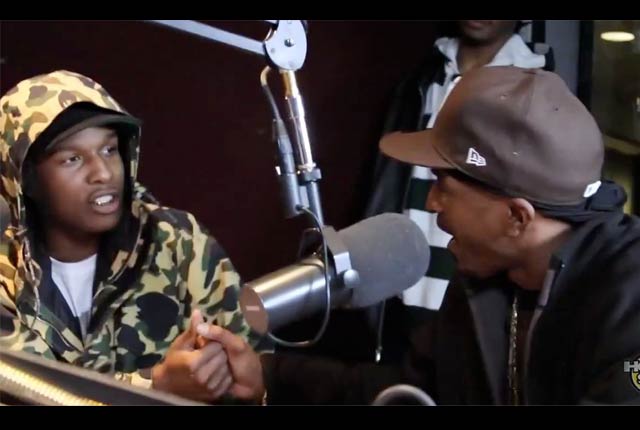
Policies may have to change for radio to mean what it used to for artists. Priorities may have to be re-examined and egos quashed. There are other routes to fame now and the competition between stations is so intense at this point, the listeners are turned off and switching their laptops on. After all, Hip Hop does exist in markets outside of New York City. New artists don’t have to do Summer Jam to win. They don’t even have to break their first records on air. With so much money involved, there may not be any change for years. For now though, Internet and satellite radio provides a bit of relief, offering more diversity than terrestrial radio. With shows like DJ Premier’s “Live From HeadQCourterz” on Sirius Satellite, there’s still a glimmer of hope for the airwaves. He told DX last month, “I love breaking new artists and new music to show that there are so many avenues of Hip Hop besides what regular radio plays.” And it’s just that simple to get Rap fans excited again about what’s on the radio.
Nadine Graham has been contributing to HipHopDX since 2010, but her words have also been featured in numerous publications including The Source, XXL and Juicy. She lives in Atlanta, Georgia.

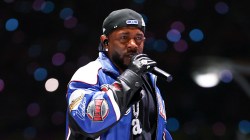
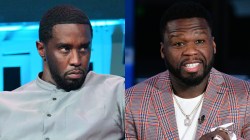


![50 Cent Shares Unseen Diddy Footage From Netflix Documentary: "[It] Shows You His Character"](https://hiphopdx.com/wp-content/uploads/2025/12/50-cent-diddy-documentary-trailer-unseen-footage.jpg?w=250)
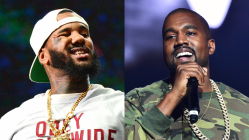
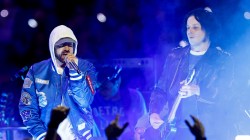
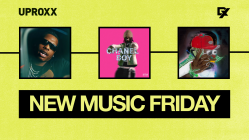
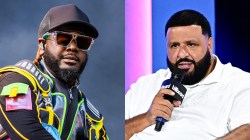

This is some real talk, as an artist that is on the verge of breaking through, the internet and satellite radio has become the premier method of capturing new listeners. Between illegal practices, easy access to digital music and the shouts of fans falling on deaf ears, regular radio is dying. I for one will not be riding the Titanic as it sinks..Dope article DX!
Check me out at http://www.ceeoneonline.com
I stopped listening to regular radio years ago, now I tune in for Live From HeadQCourterz & Rap Is Outta Control religiously. These are the only shows I’m consistantly losing my mind because the next song is always better than the last.
Cosign. I like this editorial’s points. Agreed.
NY Radio and LA Radio is a different animal though.
Great read.
good article. The Internet has somewhat taken over the radio becuz it’s uncensored and most importantly,unbiased. U get to hear watever u want anytime. Marketing yourself online is easier than going thru the radio.
this was probably the best article ive ever read on dx. knowledge reigns supreme
I read the first part of this article but couldn’t be fucked reading the rest..
I NEVER listened to the radio for “hip hop” as pretty much all of it is garbage..
I like the breakfast club because Envy and Charlamagne are funny as fuck and they sound like real dudes, that is to say some one grounded in reality who may be approachable and isn’t some douche bag who fronts like he’s billy bad ass behind security. Funkmaster Flex is simply annoying as fuck and talks way out of line.. I know for sure that dude ain’t about shit because the people that are don’t holler like a damn fool with stupid ass sound effects bigging themselves up in the safety of a studio.
i stopped reading your comment once you said you didnt read the article…
To me if anything the internet is dead support you cant just blow up on the internet you gotta do many other things then just being online all day you gotta do shows you gotta be out there in these streets grinding still but the internet is another form of promoting if somebody blew up promoting on twitter and facebook i would like to know cause you have to pay your dues
Good article
FUCK RADIO!
word i don’t give a damn about the radio. its for the younger generation as they dick ride artists like big sean and other corny ass niggas. the internets is where its at
THE RADIO WOULD B RELEVANT IF THEY DIDNT PLAY THE SAME 5 PPL ALL DAY..
Hip Hop radio killed itself by turning into an urban version of Pop Radio. The only radio formats with that limited of a playlist are Pop & Hip Hop stations. Anything else, be it Rock, Heavy Metal, Soul or even Country and you get a much more diverse song list. Not hip hop or pop tho, everything has too sound pretty much the same or they wont play it.
Which is precisely why nobody cares what they play anymore. B.O.B gettin spun around the clock and aint nobody buying the shit, cause people done woke up to the trick
Radio sucks bad, no diversity. No matter what time of day or no matter who the “D.J.” is for the show, it’s the same damn music, ova & Ova & Ova & ova & ova & Ova again……I don’t even listen to FM radio anymore.
I would listen to the radio if Hot 97 stop ridin Ross D!ck all the time. Hot 97 stays current while Power 105 plays current and older joints. The reason people listen to Hot 97 is because of the name and the history, they dont get a damn about the music. and thats why Hot 97 stay losin in the ratings.
Follow me @412Plus
Charlemagne is a bitch he gets slapped all day long